
How Did Infectious Diseases Get on the Ark?
Common Objections About the Ark
Abstract
Though you might not see an exhibit dedicated to it when you visit the Ark Encounter, there was an enormous “elephant” on board the Noah’s Ark: germs.
We live in a germophobic society, so it’s ironic just how many germs must have actually made it on board the Ark. Even though there are mostly good germs, many people tend to focus on only the bad germs—pathogens that seem to exist only to make us sick. So skeptics of the biblical account question whether pathogens (e.g., syphilis) were present on the Ark.
There’s nothing more toxic or deadly than a human child. A single touch could kill you. Leave a door open, and one can walk right into this factory; right into the monster world.
– Henry J. Waternoose III, Monsters, Inc.
Today’s culture is afraid of germs. With the rise of antibiotic-resistant bacteria and life-threatening diseases like Ebola in the news, we have become germophobes without realizing it. You can’t go out in public anymore without seeing hand sanitizer dispensers. You can wipe your grocery cart clean with a sanitizing wipe or get some hand gel while visiting the doctor’s office front desk. My PhD is in microbiology, so I’m not inclined to be germophobic because I actually enjoy growing germs. In particular, my passion is Escherichia coli.1 But when I talk about E. coli, most everyone responds with fear and dread because they only know about the disease-causing E. coli.2
A Course: Small Germs, Microbiology, and You3
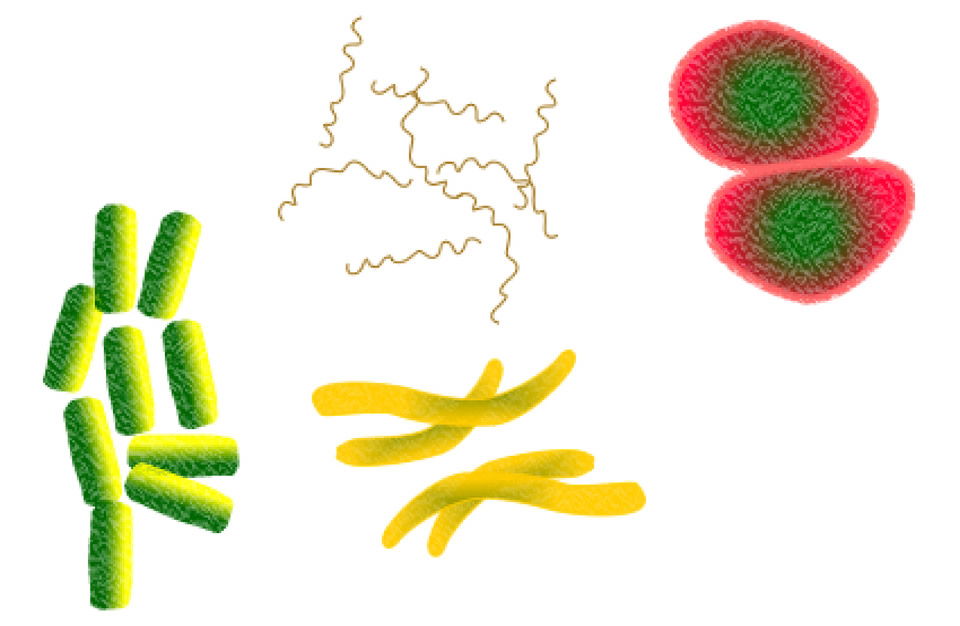
Types of bacteria. Image from Pixabay.
Microbiology is the science that studies germs. I often refer to microbiology as the biology under a microscope because it is difficult for some people to think about living things that are invisible to the naked eye. Many are afraid of what they can’t see (e.g., the bogeyman when we’re children or death when we’re adults). The irony of being afraid of what we can’t see is that we can’t see germs, yet we accept germ theory. Germ theory is the concept that there are microscopic organisms responsible for causing disease. Germ theory was developed by several prominent scientists, including Joseph Lister and Louis Pasteur. No one wanted to believe that germs existed almost 200 years ago, but today we have an over-awareness of germs. This over-awareness has led to some unique problems in industrialized nations like the United States. We have an unhealthy fear of germs, unnecessarily washing our hands too much and abusing antimicrobial products wherever available.
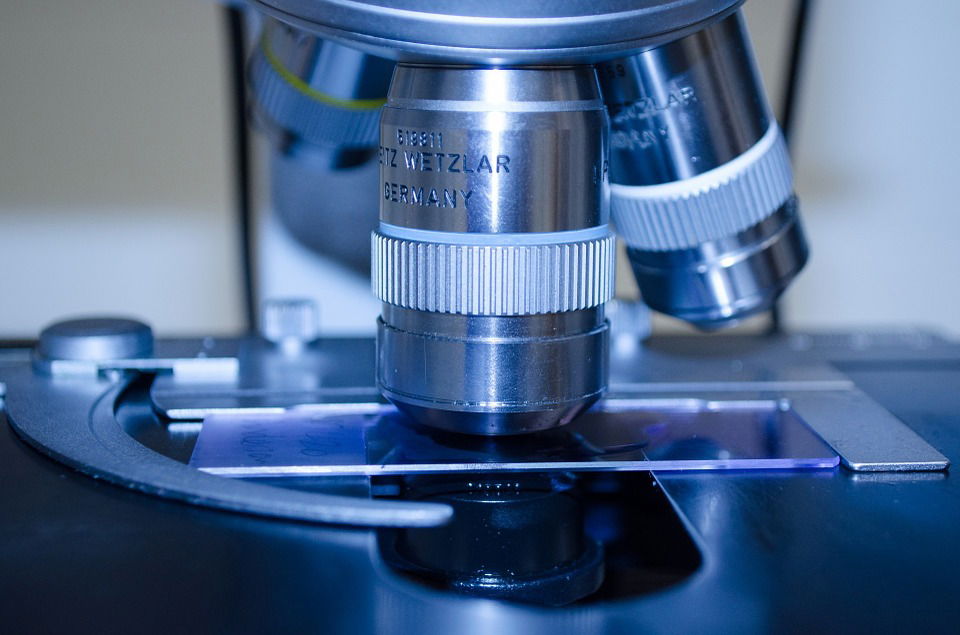
Image from Pixabay.
However, the overwhelming majority of all germs do not cause disease. In fact, nearly all known germs are good and promote health. Only about 5% of bacteria cause disease and make us sick, which is not what you would expect by the presence of hand sanitizer everywhere. In my microbiology classes, I have students use a cotton swab to look for germs in their environment; they inevitably choose places like the bathroom and their cell phone.4 Upon discovering that some of their personal items have germs on them, many students immediately clean what they touch in their everyday lives. Obsessively cleaning off what we normally touch is probably what actually causes some diseases we’re facing today, like multi-drug-resistant bacteria. Our normal germs don’t have a chance to defend us against invading microbes since helpful germs get wiped clean, making us more susceptible to germs that cause diseases.
Our myopic view of the vast amount of good microbes prevents us from healthy living in the long run.

Image from Pixabay.
It is estimated that the biomass of microbes in one acre of soil is the equivalent to nearly an entire octopus!5 If germs were the problem, then every step we take outside ought to make us deathly ill. But this doesn’t happen. In fact, pathogens (i.e., disease-causing germs) have only developed recently because of the Fall (i.e., pathogens have not existed for millions of years—they have only been around for thousands of years). Even secular scientists have begun to recognize the shortcomings of thinking about the word pathogen because they recognize that every bad germ originated from a good germ. The fact that pathogens come from good germs very clearly supports Scripture and confirms that “in the beginning, God created the heaven and the earth”—including the microbes, which were included in what was pronounced “very good”.
Were Germs on Noah’s Ark?
Up to the early 1900s, the number one cause of death was infectious disease. Infectious disease is still the leading cause of death in developing and third-world countries worldwide. By inference, Adam and the patriarchs leading up to Noah very likely did not live in a world with very many pathogens.6 The infectious diseases during the time of Genesis 3–11 must have been only a fraction of a percent (based on current known mutation rates and observed rates of emerging infectious diseases).7 However, there are lingering questions about just what kinds of germs were aboard the Ark.

Image from Pixabay.
Skeptics often cite the presence of pathogenic germs on the Ark as a reason not to believe the biblical account. Skeptics will point out that there are a number of disease-causing bacteria that only exist inside of humans as a host. It is not uncommon to find the same diseases in animals and in humans, but the diseases that are found only in humans can seem like a problem if there was a global Flood because diseases found only in humans means that these diseases would’ve had to have been inside Noah and his immediate family to exist after the Flood. Furthermore, the Flood lasted for an entire year, and that could possibly mean that Noah and his family would have carried these germs with them for an entire year. Of course those arguing against the Ark assume that every disease-causing germ existing today must have existed during the Flood in the exact same form as today. But is there any evidence that every known germ present today was present in its exact same form during the Flood?
While we know that most bacteria do not harm us, we are called to help alleviate the suffering of our fellow man. In a Darwinian worldview, there is no reason to practice medicine because the unfit should be left to die; however the biblical creationist sees value in all life that God gives. It is important that we understand the proper history for all germs before we make an inappropriate assumption about germs either way. We need to protect ourselves from either destroying all germs or allowing every germ to grow; allowing for either extreme could put us in a situation that God never originally intended.
First, we must restate that God created all microorganisms. Even though the word germ does not appear in Scripture, that does not mean that God didn’t create them. Many other modern words such as trinity, dinosaur, or Pixar are not in the Bible but we know that they exist. Bacteria were created early in Creation Week and were part of what was pronounced “very good” (Genesis 1:31). Due to Adam’s sin, all of creation was cursed to varying degrees; the genomic deterioration of microbes began at that time. We cannot know for certain that microbes immediately became pathogenic and began to kill living things right after the Fall, but we do know that the origin of “molecular” thorns and thistles could have happened at that time because of the thorns and thistles on plants (Genesis 3:17–18).
Epidemiology and Etiology of Germs on the Ark
If you visit the Ark Encounter today, there isn’t an exhibit dedicated to showing gruesome infectious diseases because there likely weren’t many infectious diseases during the days of Noah. While the number of infectious diseases were likely low, we know that there are some very ancient diseases still affecting mankind,8 such as syphilis,9 cholera,10 typhoid, pneumonia, tuberculosis,11 the plague, and leprosy.12 These infectious diseases could pose a problem by being on the Ark, seeing that these germs are extremely infectious with high rates of mortality. Furthermore, some of these infectious diseases are only found in humans. Therefore, either these germs were on the Ark in hidden form or skeptics are just grasping at straws to discredit God’s Word.
How Much Wood Could a Woodchuck Chuck If He Didn’t Have Any Intestinal Germs? (Not Much)
Clearly, there were myriad germs on the Ark. If each of the approximately 6,700 animals (per Ark Encounter’s estimation) on board the Ark carried approximately 10 billion germs, then that means there were approximately 70 trillion germs on the Ark.13 So it is very likely that there were a great variety of germs also present. With so many germs on the Ark, and most of them “very good,” I can think of four basic categories for the origin of infectious diseases since the time of the Flood.
Normal Turned Abnormal
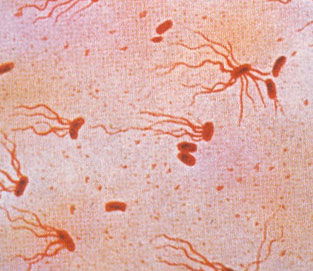
Salmonella typhi. Image by Roinujs, via Wikimedia Commons.
Recently, secular microbiologists have suggested that we “ditch” the term pathogen because we now know that nearly every instance of infectious disease can be traced back to a normal, healthy germ.14 We already know that typhoid fever and the plague are members of bacterial families present in our intestine. In fact, we find that many pathogens exist as normal germs in animals like cattle, which typically are the primary source for human infection. Germs that are present in one animal source and cause disease in another animal are called zoonotic because they often infect humans from animal sources. Since the number of animals was very high on the Ark, the chances for infectious disease would also have been extremely high. Noah and his family were on the Ark for just over a year, but infectious diseases would usually cause death in significantly less time. The likelihood of these zoonotic germs causing disease at the time of the Flood must have been extremely low considering that all eight humans that boarded the Ark also stepped off the Ark (i.e., no one died on the Ark). In all actuality, these zoonotic germs probably didn’t cause disease until some time after the floodwaters receded.
Displaced from Normal
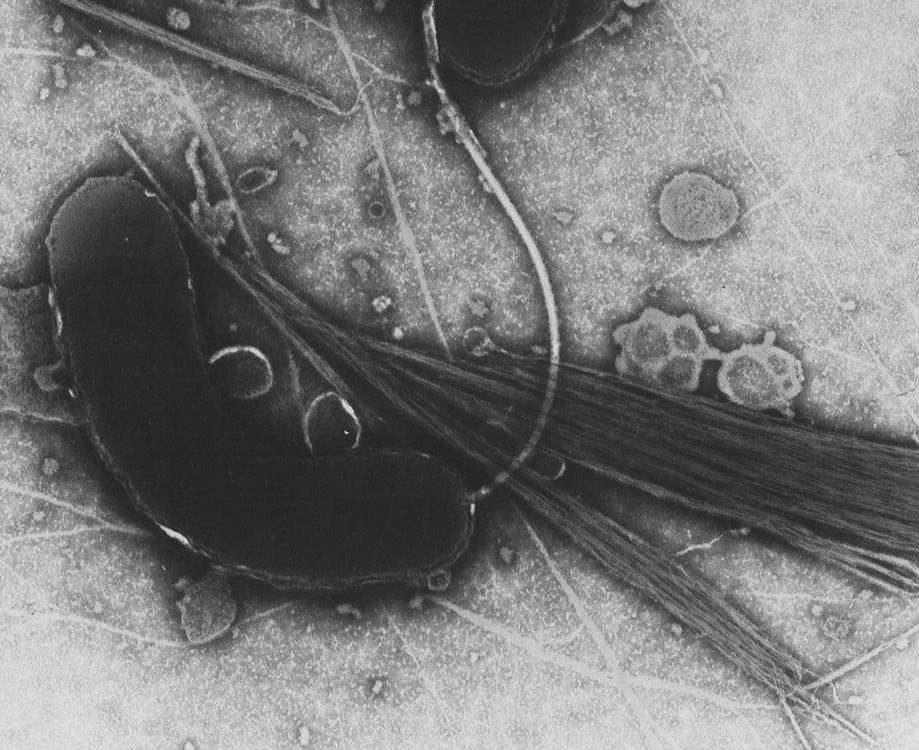
Vibrio cholerae. Image by Common Good, via Wikimedia Commons.
While many germs were living in association with normal animals present on the Ark, a number of ancient infectious diseases like cholera tell a different tale called displacement. Displacement happens when a normal germ found in the environment (e.g., dirty water) enters an animal host and causes disease. Cholera is normally found living in marine environments, living in close association with shellfish, and can enter our food chain, leading to disease. Noah wasn’t required to bring fish or shellfish on board the Ark because shellfish do not have the breath of life (i.e., everything on the Ark had the breath of life in it). Cholera wasn’t on the Ark because shellfish weren’t on the Ark. Displacement-style germs were not present on the Ark but such diseases were likely encountered after Noah got off the Ark, living in a turbulent environment reeling from the chaos of the Flood.
Already Normal Given Dangerous Opportunity
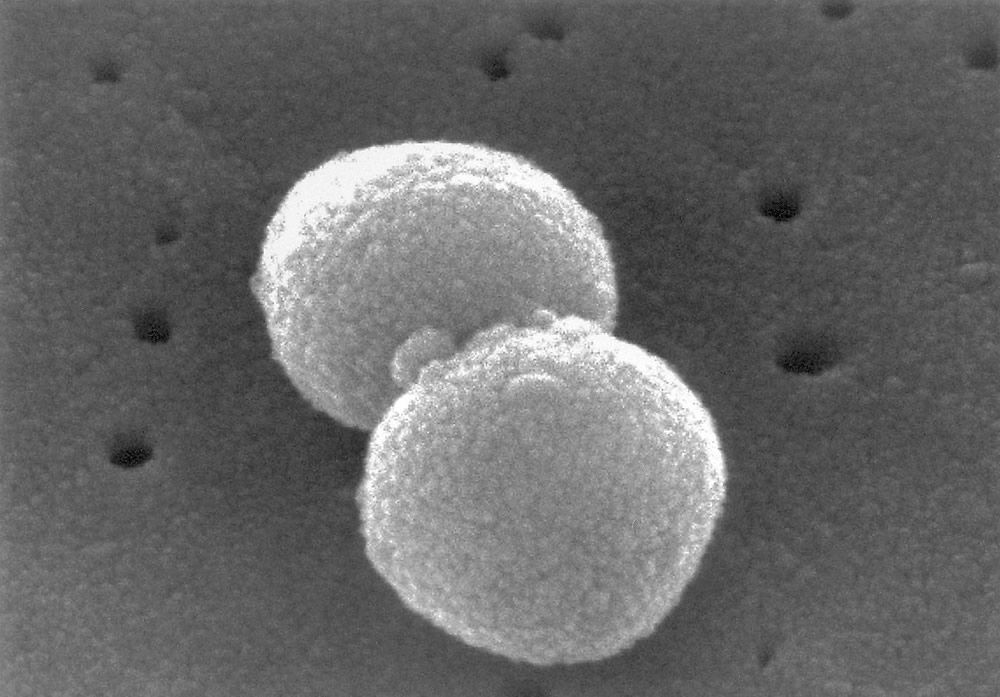
Streptococcus pneumoniae. Image by Wickey-nl, via Wikimedia Commons.
Another subcategory of germs living in association with their host includes those causing diseases like pneumonia. Most instances of pneumonia are caused by a germ that is part of our normal microbiota in our nasal cavity until the opportunity presents itself to enter our lungs and make us sick. As previously stated, Noah and at least his son Shem lived a long time after the Flood. Each of them likely were carrying some kind of infectious disease, but their bodies were in such good health that even minor disturbances like living on an Ark did nothing to their overall health. The possibility exists that Noah and his family were carrying a number of potentially harmful germs, but Noah and his family had bodies that were not as affected by cumulative years of sin and its effects as ours are today. Furthermore, there is strong evidence that the mutation rates sped up drastically after the Flood so that normal germs would also be changed into disease-causing germs in just a few generations.15
Unknown Original Function That Turned Wicked
The final category of germs on the Ark is the most difficult to explain. They are the ones that only make humans sick and are only found in humans. What makes these germs particularly difficult to understand in light of the Ark is that they cause sexually transmitted diseases (STDs). Of the list of ancient diseases, STDs such as syphilis might initially seem difficult to explain in terms of how were they on the Ark. However, we have two likely explanations for diseases like syphilis being around during the time of the Flood.16
The first possibility for how STDs got a boarding pass on the Ark involves the wickedness of Noah’s day.17 We know that Noah found grace, but all eight people on the Ark were still sinners and (more importantly) Scripture is silent on the purity of the seven other people on the Ark (admittedly, this is biblical conjecture on my part, and an argument from silence is not as strong as an argument directly from the text). The days of Noah also included the days leading up to the Flood. During those last days before the Flood, many people were living impure lifestyles (Genesis 6:5). It is easy to overlook that Noah’s sons were alive when Abraham was alive, and Abraham had to deal with Lot in the cities of Sodom and Gomorrah. In theory, there were only a few generations between Noah and Abraham before God judged Sodom and Gomorrah for sexual immorality.
Another possible explanation for these diseases on the Ark is that STDs could be relatively new, coming into existence since the time of the Flood.18 We have to remember that Noah and his family probably did not see evidences of infectious diseases all around them the way that we do today. The patriarchs leading up to Noah all lived extremely long lives and likely did not use antibiotics. It is entirely reasonable that STDs came into existence sometime after the Flood, as most other forms of infectious diseases have (e.g., cholera, tuberculosis, or pneumonia). It is tempting to speculate that the physical point behind getting circumcised was to minimize transmission of STDs among God’s people. Therefore, the outward sign of being a Jew could also simultaneously serve as a way of preventing or transmitting an STD. We don’t know this for sure, but it wouldn’t be the first time that God protected His chosen people from sinful consequences (e.g., His instructions regarding inbreeding and, of course, the 10 Commandments).
Syphilis is the commonly cited ancient sexually transmitted disease to consider in light of both proposals for the origin of STDs and the Ark. We know syphilis was present in “ancient” man because Neanderthals had syphilis.19 (In using the word “ancient,” I am not meaning that this was millions or even tens of thousands of years ago, but that it was during the time of civilization a few thousand years ago.) Syphilis is not as severe of a disease today as it was in ancient times. Modern medicine has limited the disease so that it doesn’t progress to the latest stages when gummas are formed. Gummas are open sores known to affect the body and directly impact the skeleton by leaving behind scars on bones, which are how we know that Neanderthal had syphilis (from their bones). Neanderthal remains clearly show that they were sexually promiscuous since many had syphilis. Neanderthals were completely human; therefore, knowing when, where, and how they lived, it is entirely reasonable that Noah’s descendants may have been similar to Neanderthals in their sexual behaviors. We know that Neanderthals became prominent during the Ice Age shortly after the Flood. While we tend to think of the patriarchs as living admirable lives, they had shortcomings just like their contemporaries. The days of Noah within a couple short generations after the Flood could have been similar to today’s standards of sexual promiscuity and immorality.
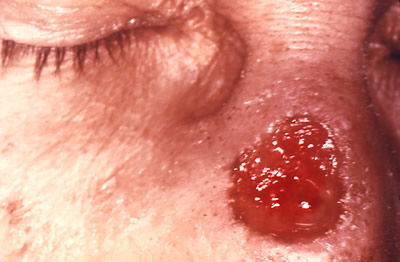
Gumma of nose due to a long-standing syphilitic Treponema pallidum infection. Image by Optigan13, via Wikimedia Commons.

Treponema pallidum. Image by Kauczuk, via Wikimedia Commons.
In summary, the evolutionary origin of syphilis remains an enigma specifically because it is a spirochete germ, there are no close relatives to examine, it has a unique genome, and it does not fit traditional microbiology definitions (e.g., shape and size) used to support its evolutionary origin.20 In all honesty, neither evolutionists nor creationists can definitively conclude the origin of something like syphilis because there are too few clues. However, we can be certain it spread in a post-Flood world and is very ancient to the extent that it could date back as far as Noah’s family.
Biblical Infectious Disease: A Type of Sin
Most attacks on the Ark ultimately boil down to a spiritual problem and not a scientific problem. The Ark was a foreshadowing of Christ in that it was a means to be saved. But saved from what? Many in today’s society are comfortable with the idea of a God that created everything but stepped away from creation and left us to our own demise. This is not scriptural. Throughout Scripture, especially in the books of Moses, we see that diseases like leprosy are compared to the spiritual illness called sin (Leviticus 13:2–3; Matthew 8:2–3). The irony of pointing out apparent problems with certain diseases coming on the Ark is simultaneously a dismissal of God’s judgement of sin by the Flood and by His ultimate judgement of sin on the Cross. The sad part to this is that some people even go so far as to suggest that we don’t teach children about the reason for the judgment of the world—that sin is disgusting and unattractive before a holy God. We must clearly proclaim that the world that then existed before the Flood was a wicked place and that God judged their wickedness because of sin. Sin is always deserving of judgment, but we are not the judge of sin—God is

The Ark Encounter south of Cincinnati features a full-size Noah’s Ark, remembering the salvation God provided for Noah and his family and the salvation available to us in the Lord Jesus Christ.
Among Christians, there is often incongruence between a desire to believe in the authority of Scripture and a desire to disregard the parts that step on our toes. The problem with actually believing in the totality of Scripture and God’s judgment of sin means that I must accept that I am a sinner deserving the same judgment because of my own personal sin.
The ultimate issue is one between man’s word and God’s Word. When we align our will with His, we will accept that our sinfulness is worthy of judgment. Our only salvation from the spiritual disease of sin is to accept the sin payment made by the Lord Jesus Christ. Praise the Lord for His provision of an Ark of salvation in the Lord Jesus. We can also praise the Lord that, though there were trillions of bacteria and microbes on the Ark, there weren’t more infectious diseases at that time or mankind would’ve been wiped out shortly after stepping off the Ark.
Footnotes
- I’ve got a t-shirt in my office with that phrase written on it. No joke.
- Disease-causing bacteria are called pathogens. Some pathogens have multiple different strains including some that are healthy to us. E. coli is a great example of a species that has strains capable of both promoting health and causing disease. This particular area of promoting health or causing disease is the active area of research that I do with students at Truett McConnell University.
- For the purposes of this article and to make this easier to read, I have intentionally left out a number of other disease-causing microbes. Specifically, I have intentionally left out parasites, protozoans, and viruses. Each of these has its own interesting stories. However, the controversy most often associated with germs on the Ark deals with bacteria. For that reason, I have chosen to focus on bacteria to the neglect of everything else that causes disease.
- Students are always shocked to find that not much really grows in the bathroom. They’re often mistakenly shocked by what grows on their cell phone. However, it’s the same germs that were growing on their hands—the irony is that no one really looks for what is growing on their hands.
- One square acre of soil is approximately 2,024,458 pounds, which is the equivalent of 918,278,702.2 grams. The amount of bacteria in one gram of soil is 50,000,000. So the total number of bacteria in one square acre of soil is 4.59 x 1016 bacteria. If one bacterium dry weight is 0.95 pg, then that means the total bacterial biomass of one acre is 4.36 x 104 g. One octopus weighs approximately 5.0 x 104 g (11 lb.) on average. See William B. Whitman, David C. Coleman, and William J. Wiebe, "Prokaryotes: The Unseen Majority," Proceedings of the National Academy of Sciences of the United States of America 95, no. 12 (1998): 6578–83, doi:10.1073/pnas.95.12.6578; and Frederick C. Neidhardt, Escherichia coli and Salmonella: Cellular and Molecular Biology Vol 1. (Washington, DC: ASM Press, 1996), 14; and “What Is an ‘Acre Furrow Slice’ of Soil?,” Penn State, http://plantscience.psu.edu/research/centers/turf/extension/factsheets/acre-furrow-slice.
- If infectious diseases are so deadly in parts of the world that don’t have modern antibiotics or vaccines, then infectious diseases would’ve likely been the leading cause of death in the past as well. That extrapolation works well for the most part, but does not provide a sufficient explanation as to why the patriarchs lived as long as they did. The reason the ages of the patriarchs should be surprising is that they lived in a world without regular administration of antibiotics and vaccines. Since antibiotics and vaccines prolong our current life spans, then it stands to reason that we all should be dying at younger ages than we currently are. If we are supposed to be dying at younger ages than we are now, it stands to reason that the same would be true for the patriarchs if the number and prevalence of diseases was as widespread in their time period. Since they lived exceptionally long lives and survived the childhood infections that are the leading causes of disease, then these patriarchs were exceptionally healthy and must not have encountered very many infectious diseases. Ultimately, we cannot adamantly say that this was the case, but it stands to reason that they did not contract very many infectious diseases like we have today.
- There was no disease before the Fall, so infectious disease must have come after the Fall at the soonest. Diversification of infectious diseases probably occurred rapidly from the time after the Flood until the time of Abraham. Infectious diseases are known from archaeological evidences of Ancient Egypt, which was an advanced civilization by the time of Abraham in Genesis 12. Thus, infectious diseases emerged within the relatively small time span between Genesis chapter 3 and 11.
- Garth Sundem, “10 Oldest Known Diseases,” How Stuff Works, accessed November 2, 2016, http://science.howstuffworks.com/life/cellular-microscopic/10-oldest-known-diseases10.htm.
- D. J. M. Wright, “Syphilis and Neanderthal Man,” Nature 229, no. 5284 (1971): 409, doi:10.1038/229409a0.
- Cholera, typhoid, and pneumonia were all listed by Hippocrates near 400 BC.
- Digby F. Warner and Valerie Mizrahi, “Complex Genetics of Drug Resistance in Mycobacterium tuberculosis,” Nature Genetics 45, no. 10 (2013): 1107–1108, doi:10.1038/ng.2769.
- Some say Rickettsia make the list of ancient bacterial diseases, but the Rickettsia are such a unique group of living organisms that microbiology would have to be rewritten as a discipline since they break almost every known rule. The only reason they were included in the list of most ancient diseases is that they have some DNA similarity with mitochondria. Since mitochondria do not cause disease, the Rickettsia were excluded from this list. Kalliopi Georgiades, Vicky Merhej, and Didier Raoult, “The Influence of Rickettsiologists on Post-Modern Microbiology,” Front Cell Infect Microbiology 1, no. 8 (2011): doi:10.3389/fcimb.2011.00008.
- Though there is no current average number of germs carried by each animal, humans are known to have one trillion germs. However, the average number of germs per animal was chosen as a lower number because of all the organisms that are smaller than humans.
- Arturo Casadevall and Liise-anne Pirofski, “Microbiology: Ditch the Term Pathogen,” Nature 516, no. 7530 (2014): 165–166, doi:10.1038/516165a.
- See Troy Lacey, “Did Life Evolve Faster Before or After the Extinction of the Dinosaurs?,” Answers in Genesis, September 26, 2016, https://answersingenesis.org/theory-of-evolution/did-life-evolve-faster-before-or-after-extinction-dinosaurs/.
- While trying to discredit the Bible by questioning how these STD-causing bacteria got on the Ark, evolutionists don’t even have an origin for bacteria that cause STDs in the first place. Do not let an evolutionist bring up STDs as a criticism to the biblical worldview. We can know from God’s Word that everything was created “very good” and was cursed, which is significantly more than any evolutionist has to offer for the origin of bacteria that cause STDs.
- Just because someone has an STD does not mean that person cannot be saved from his sin.
- A variety of STD germs have a recent origin. In particular, the HIV infection is a very recently developed STD. However, the point of this article is to avoid viruses on the whole, so they were left out of the discussion.
- Wright, “Syphilis and Neanderthal Man.”
- Part of the evolutionists’ difficulty in understanding the origin of spirochetes is largely tied to the shape of the spirochete itself. Spirochetes have a spiral shape that is unlike any of the other more common microbe shapes like a sphere or a rod. Since it is neither shape, spirochetes also have to accommodate their cellular physiology accordingly; therefore they perform binary fission (a form of reproduction) in a unique fashion, involving what’s been referred to as intracellular flagella (though it is not a flagellum at all). Spirochetes like syphilis enter humans via sexual intercourse and can lay dormant for years without being detected, which is why they are so difficult to treat even with modern antibiotics. While we have modern antibiotics to treat syphilis, there is no known cure for it outside of abstinence as Scripture plainly teaches.
Recommended Resources

Answers in Genesis is an apologetics ministry, dedicated to helping Christians defend their faith and proclaim the good news of Jesus Christ.
- Customer Service 800.778.3390
- © 2024 Answers in Genesis



